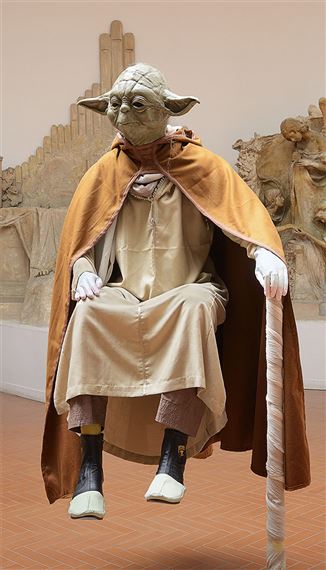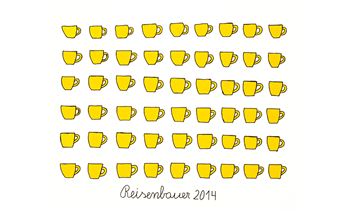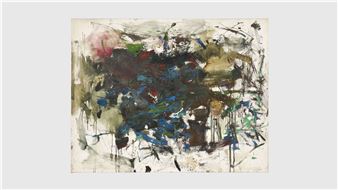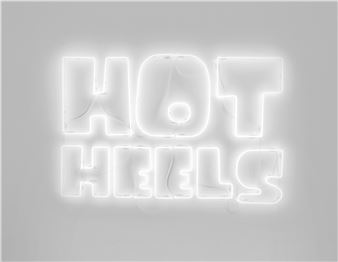Swiss Institute Architecture and Design Series: 3rd Edition. Readymades Belong To Everyone
Swiss Institute is delighted to announce the third edition of its Architecture and Design Series, entitled Readymades Belong To Everyone. This marks the inaugural exhibition at SIвҖҷs new home in the heart of the East Village. Curated by Niels Olsen and Fredi Fischli, directors of exhibitions in the Institute for the History and Theory of Architecture (gta) at the Swiss Federal Institute of Technology (ETH) in ZГјrich, Readymades Belong To Everyone features more than 50 artists, architects and collectives from 16 countries with 17 new commissions. The exhibition extends contemporary understandings of the readymade, as it has filtered through histories of art, design and architecture to become mutated, redoubled, and accelerated in urban environments of commerce and control.
It has been more than a century since Marcel Duchamp reorganized aesthetic categories with his seminal Fountain (1917), creating new attention to context and found or manufactured materials. By the 1980s, such artistic conversations had evolved into strategies of appropriation even more explicitly associated with critique, especially in regard to mass-produced objects and commercial imagery. During that decade, the immediate neighborhood of Swiss InstituteвҖҷs new location in the East Village became an epicenter of experimentation with readymade forms: David Hammons sold snowballs to passersby in his Bliz-aard Ball Sale on Cooper Square in 1983; and works by artists such as Jeff Koons, Haim Steinbach, and Jennifer Bolande, featuring everyday items, were shown at galleries such as International with Monument, started by artists Kent Klamen, Elizabeth Koury, and Meyer Vaisman, and Nature Morte, run by artists Peter Nagy and Alan Belcher.
The project from which this exhibition takes its name, readymades belong to everyoneВ®, founded by artist Philippe Thomas, also debuted nearby in 1987, when Cable Gallery was transformed into a public relations agency that adopted the modes of advertising production for art. This exhibition includes works вҖҳproducedвҖҷ by the agency, in which collectors were transferred authorship of the work that they purchased.
Just as Duchamp was responding to the rise of industrial production with his readymades, so too were architects reflecting on the reality of the machine age in their work. For Le Corbusier, the objet trouvГ© of the steamboat became the ultimate ideal for architecture, a fetishization of the innovation made by engineers in this time. Later, Alison and Peter Smithson formulated their own concept of the вҖңas foundвҖқ in architecture, Denise Scott Brown and Robert Venturi published Learning from Las Vegas (1972), and Charles Jencks and Nathan Silver established a manifesto for improvisation with Adhocism (1972).
Readymades Belong To Everyone creates a cityscape of readymade objects, staging an urban environment that emphasizes issues of security, real estate and surreality, echoing everyday life in many of todayвҖҷs major metropolitan areas. Architectural contributions that employ readymade forms and styles as political or playful gestures include Rem KoolhaasвҖҷs Field Trip (1971), which takes the Berlin Wall as a found object of study, and Aldo RossiвҖҷs Prototype for a Cabina (1981), which uses a vernacular beach hut as a model. To reflect the contemporary role of the readymade in architecture, the exhibition draws upon recent practices such as Lacaton VassalвҖҷs appropriation of an existing industrial building for the FRAC museum in Dunkerque and Smiljan RadicвҖҷs Duchampesque use of found objects in models. Notional readymades employed by artists in the exhibition include street performers, garbled t-shirts aimed at tourists and teenagers, and the branding of international hotel chains. Jennifer BolandeвҖҷs Conjunction Assemblage (1988) constructs hi-rise architecture from appliances associated with domestic labor, while videos by Lucy McKenzie and Lena Youkhana present subversive variations on the property tour.

Recommended for you
Swiss Institute is delighted to announce the third edition of its Architecture and Design Series, entitled Readymades Belong To Everyone. This marks the inaugural exhibition at SIвҖҷs new home in the heart of the East Village. Curated by Niels Olsen and Fredi Fischli, directors of exhibitions in the Institute for the History and Theory of Architecture (gta) at the Swiss Federal Institute of Technology (ETH) in ZГјrich, Readymades Belong To Everyone features more than 50 artists, architects and collectives from 16 countries with 17 new commissions. The exhibition extends contemporary understandings of the readymade, as it has filtered through histories of art, design and architecture to become mutated, redoubled, and accelerated in urban environments of commerce and control.
It has been more than a century since Marcel Duchamp reorganized aesthetic categories with his seminal Fountain (1917), creating new attention to context and found or manufactured materials. By the 1980s, such artistic conversations had evolved into strategies of appropriation even more explicitly associated with critique, especially in regard to mass-produced objects and commercial imagery. During that decade, the immediate neighborhood of Swiss InstituteвҖҷs new location in the East Village became an epicenter of experimentation with readymade forms: David Hammons sold snowballs to passersby in his Bliz-aard Ball Sale on Cooper Square in 1983; and works by artists such as Jeff Koons, Haim Steinbach, and Jennifer Bolande, featuring everyday items, were shown at galleries such as International with Monument, started by artists Kent Klamen, Elizabeth Koury, and Meyer Vaisman, and Nature Morte, run by artists Peter Nagy and Alan Belcher.
The project from which this exhibition takes its name, readymades belong to everyoneВ®, founded by artist Philippe Thomas, also debuted nearby in 1987, when Cable Gallery was transformed into a public relations agency that adopted the modes of advertising production for art. This exhibition includes works вҖҳproducedвҖҷ by the agency, in which collectors were transferred authorship of the work that they purchased.
Just as Duchamp was responding to the rise of industrial production with his readymades, so too were architects reflecting on the reality of the machine age in their work. For Le Corbusier, the objet trouvГ© of the steamboat became the ultimate ideal for architecture, a fetishization of the innovation made by engineers in this time. Later, Alison and Peter Smithson formulated their own concept of the вҖңas foundвҖқ in architecture, Denise Scott Brown and Robert Venturi published Learning from Las Vegas (1972), and Charles Jencks and Nathan Silver established a manifesto for improvisation with Adhocism (1972).
Readymades Belong To Everyone creates a cityscape of readymade objects, staging an urban environment that emphasizes issues of security, real estate and surreality, echoing everyday life in many of todayвҖҷs major metropolitan areas. Architectural contributions that employ readymade forms and styles as political or playful gestures include Rem KoolhaasвҖҷs Field Trip (1971), which takes the Berlin Wall as a found object of study, and Aldo RossiвҖҷs Prototype for a Cabina (1981), which uses a vernacular beach hut as a model. To reflect the contemporary role of the readymade in architecture, the exhibition draws upon recent practices such as Lacaton VassalвҖҷs appropriation of an existing industrial building for the FRAC museum in Dunkerque and Smiljan RadicвҖҷs Duchampesque use of found objects in models. Notional readymades employed by artists in the exhibition include street performers, garbled t-shirts aimed at tourists and teenagers, and the branding of international hotel chains. Jennifer BolandeвҖҷs Conjunction Assemblage (1988) constructs hi-rise architecture from appliances associated with domestic labor, while videos by Lucy McKenzie and Lena Youkhana present subversive variations on the property tour.
Artists on show
- Adriana Lara
- Alain Clairet
- Alan Belcher
- Aldo Rossi
- Arno Brandlhuber
- Cedric Price
- Christian Kerez
- Claire Fontaine
- Emanuel Rossetti
- Flannery Silva
- Gili Tal
- Heimo Zobernig
- Jan Vorisek
- Jennifer Bolande
- Kaspar Müller
- Ken Lum
- Kersten Geers
- Klara Liden
- Lady Pink
- Lena Tutunjian
- Lena Youkhana
- Lucy McKenzie
- Lutz Bacher
- Maria Eichhorn
- Martin Wong
- Merlin Carpenter
- Oliver Payne & Nick Relph
- Petra Blaisse
- Pierre Joseph
- Reena Spaulings
- Rem Koolhaas
- Richard Sides
- Robert Haussmann
- Ser Serpas
- Sylvie Fleury
- Wade Guyton
Contact details

Related articles
In between your summer vacation, and weekend trips to the beach, make sure to check out these shows in New York this summer.

 ARTISTS
ARTISTS















